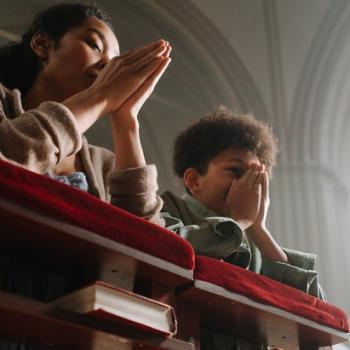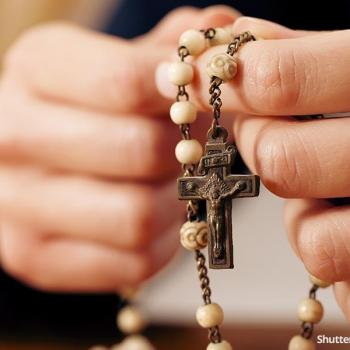By Rev. Joshua M. Shawnee, SSM
Anyone who has traversed the Catholic blogosphere lately has probably noticed an interesting trend. Ancient Memento Mori practices and devotions have found new life among a diverse array of Catholics and other Christians. These practices and devotions vary widely, but all call the faithful to remember something most of us spend a lot of time, energy and money trying to avoid, delay, and forget. Memento Mori is command. It means “remember your death.”
Rather than being a morbid, fatalistic fascination with the macabre, Memento Mori devotees assert that taking time to remember your death is a deadly serious way of joyfully and thankfully embracing all that life has to offer on this side of Last Rites. As it turns out, remembering that “we are dust and to dust we shall return” has inspired many a comatose Catholic to dust off their rosaries and daily missals in pursuit of life eternal sooner rather than later.
Lent is the perfect time to descend into the fountain of life that is the spiritual and corporal works of mercy. A Memento Mori spirituality would challenge us to focus on two of the spiritual and corporal works that are particularly countercultural, namely praying for and burying the dead. But if grave digging and being a professional mourner aren’t your thing, don’t give up the ghost. There are still a number of ways to practice these works of mercy that won’t creep out your still living family members and friends.
First, pray for the dead. In our faith tradition we remember the dead at every mass, say special masses for the recently departed, and consistently commemorate the throngs of saints, martyrs, and prophets who have gone before us. After all, in the great Communion of Saints death is a doorway not a wall. Taking time to remember and pray for the dead can be a sobering reminder of our own mortality and a comforting reminder that we too will remain beloved, active participants in the life and witness of the Church even in our repose.
Next, support non-profit hospice ministries with your time, talents, and treasure. Journeying with the dying and comforting the bereaved are particularly meaningful ways of living the Memento Mori charism. Embracing a non-stipendiary funeral ministry is another way of being a real blessing during a time of grief and duress, particularly for economically disadvantaged families in your community. If your schedule allows, you can also reach out to funeral homes to be placed on a call list to attend memorials where there are likely to be few or no attendees. Being present to bear witness to these holy moments is sure to bless the merciful, both the living and the dead, with unexpected graces.
Finally, as we walk with Christ into Holy Week this year take a moment to enjoy a “quiet as the grave” walk through a local cemetery or memorial garden. Reflect on the great mysteries of life and death. Ponder the Way of the Cross and where it leads in this life and in the next.
After all, we can’t get to Easter Sunday unless we traverse Good Friday and Holy Saturday first. This Lent learn to enjoy the journey, not just the destination.
The resurrection of Memento Mori devotions and practices may be a passing fad. Only time will tell. What remains eternally, however, is the grace of having walked in the way of mercy in this life for those who have moved on to the life of the world to come. If nothing else, praying for and burying the dead will call us to a living remembrance of our own inevitable death. And if the Memento Mori devotees are correct, thinking about our own end may be the perfect, even if unexpected place to find light, life, and new beginnings.
The Rev. Joshua Shawnee is the Pastor of the Parish Church of St. Jerome, an inclusive and egalitarian Intentional Eucharistic Community rooted in the Old Catholic tradition. Fr. Josh is also the Vicar General of the Society of Mercy.












